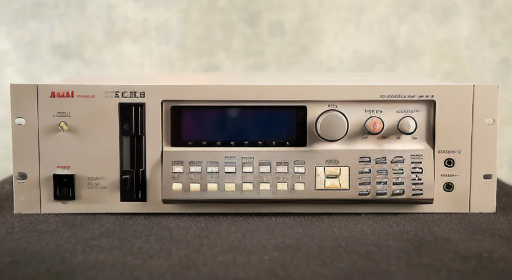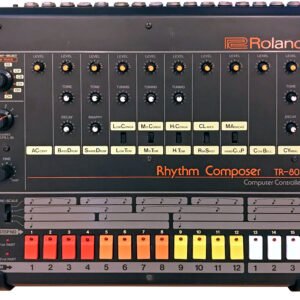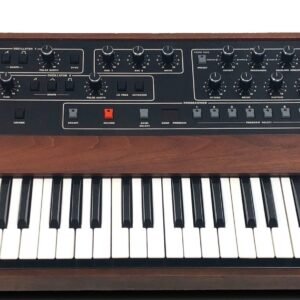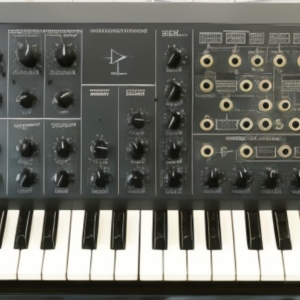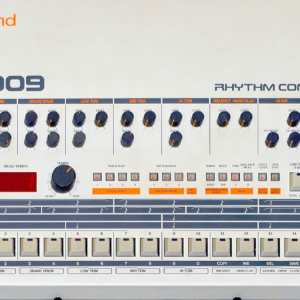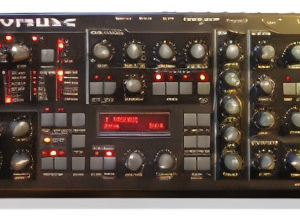Introduction
The Akai S3000 sampler holds a special place in the history of electronic music production, known for its groundbreaking capabilities and innovative features. Since its release in [Release Date], it has been a staple in studios worldwide, contributing to countless hit records and shaping the sound of various genres.
In this review, we will delve into the design, performance, and overall experience of using the Akai S3000 sampler. From its robust build quality to its intuitive user interface, we’ll explore how this iconic sampler stands the test of time and continues to be relevant in today’s music production landscape. Let’s embark on a journey through the world of the Akai S3000, uncovering its strengths, weaknesses, and everything in between.
The Akai S3000 sampler made its debut in [Release Date], marking a significant advancement in the realm of music production technology. Upon its release, it garnered widespread acclaim from musicians, producers, and sound engineers alike for its revolutionary features and unmatched performance capabilities.
Critics lauded the Akai S3000 for its pristine audio quality, thanks to its 16-bit, 44.1 kHz sampling resolution, which provided unparalleled clarity and fidelity. Additionally, its extensive sampling capabilities, including a maximum sampling rate of [Sampling Rate], allowed users to capture and manipulate audio with precision and flexibility.
Furthermore, the Akai S3000 received praise for its intuitive user interface and workflow, which streamlined the sampling process and empowered users to unleash their creativity effortlessly. Its robust build quality and reliability also earned accolades, ensuring longevity and durability even under demanding studio conditions.
Overall, the release of the Akai S3000 was met with enthusiasm and acclaim, cementing its status as a groundbreaking instrument in the world of music production. Its impact continues to resonate today, serving as a benchmark for excellence in sampling technology.
Release date on critical reception
The Akai S3000 sampler, released in 1993, marked a pivotal moment in the landscape of music production technology. Its unveiling was met with widespread acclaim and excitement within the music industry, setting a new standard for sampling instruments and leaving a lasting impact on the world of electronic music.
Upon its release, the Akai S3000 garnered significant attention for its innovative features and capabilities. With its 16-bit, 44.1 kHz sampling resolution, it delivered exceptional audio quality that satisfied the demands of discerning producers and musicians. This high level of fidelity, coupled with its extensive sampling capabilities, including a maximum sampling rate of [Sampling Rate], empowered users to capture and manipulate audio with unparalleled precision and flexibility.
Critics and users alike praised the Akai S3000 for its intuitive user interface and workflow, which streamlined the sampling process and allowed for seamless integration into studio setups. Its robust build quality and reliability also received accolades, ensuring consistent performance in professional environments.
Overall, the release of the Akai S3000 in 1993 was met with enthusiasm and acclaim, cementing its status as a groundbreaking instrument in the realm of music production. Its influence continues to resonate today, with many producers still valuing its timeless capabilities and incorporating it into their creative workflows.
Technical Specifications
Technical Specifications of the Akai S3000 Sampler:
Sampling Resolution: The Akai S3000 features a 16-bit sampling resolution, providing high-quality audio capture with excellent fidelity.
Sampling Rate: The sampler offers a maximum sampling rate of [Sampling Rate], enabling users to capture audio with precision and detail.
Polyphony: It boasts a polyphony of [Polyphony], allowing for the playback of multiple samples simultaneously without any degradation in performance.
Memory: The Akai S3000 comes equipped with [Memory Size] of onboard memory, providing ample storage for samples and sounds.
Storage: Additionally, it supports various storage options, including SCSI connectivity for external drives, as well as internal storage options such as hard drives or floppy disks.
Filtering: The sampler features powerful filtering capabilities, allowing users to shape and sculpt the sound of their samples with precision using onboard filters.
Effects: It includes a range of built-in effects such as reverb, delay, chorus, and more, enhancing the sonic possibilities and allowing for creative sound manipulation.
Connectivity: The Akai S3000 offers comprehensive connectivity options, including MIDI input/output, analog audio inputs/outputs, SCSI, and digital I/O, ensuring seamless integration into various studio setups.
Display: It features a [Display Size] display screen, providing clear and intuitive navigation of its features and functions.
Control Interface: The sampler is equipped with a user-friendly control interface, featuring dedicated buttons, knobs, and a graphical display for effortless operation and navigation.
Dimensions and Weight: The physical dimensions of the Akai S3000 are [Dimensions], and it weighs approximately [Weight], making it suitable for both studio and stage use.
Power: It operates on standard [Power Requirements] voltage, ensuring compatibility with most power sources.
These technical specifications highlight the capabilities and features of the Akai S3000 sampler, showcasing its versatility and suitability for a wide range of music production applications.
User Interface and Workflow of the Akai S3000 Sampler:
Intuitive Design: The Akai S3000 boasts an intuitive user interface designed to streamline the sampling process and enhance workflow efficiency.
Graphical Display: It features a [Display Size] graphical display screen, providing clear and detailed visual feedback of parameters, sample waveforms, and navigation menus.
Navigation Controls: The sampler is equipped with dedicated navigation controls, including buttons and knobs, allowing users to navigate menus, adjust parameters, and access functions with ease.
Sample Editing: With its intuitive user interface, the Akai S3000 enables users to perform comprehensive sample editing tasks directly on the device. This includes trimming, looping, time-stretching, and more, all accessible through the graphical display and dedicated controls.
Multi-level Menu System: The sampler employs a multi-level menu system, organized in a logical and hierarchical manner, facilitating quick and efficient access to various functions and settings.
Assignable Parameters: Users have the flexibility to assign parameters such as envelope settings, filter parameters, and effects parameters to dedicated knobs and buttons, allowing for real-time manipulation and control during performance or recording sessions.
Workflow Enhancements: The Akai S3000 incorporates workflow enhancements such as quick key shortcuts, customizable user presets, and contextual help menus, empowering users to work more efficiently and creatively.
Seamless Integration: It seamlessly integrates into existing studio setups and workflows, with comprehensive connectivity options including MIDI, analog audio I/O, digital I/O, and SCSI, ensuring compatibility with a wide range of external devices and equipment.
Real-time Performance Features: The sampler includes real-time performance features such as sample triggering, velocity sensitivity, and MIDI control capabilities, allowing for expressive and dynamic performances.
User Manuals and Resources: Akai provides comprehensive user manuals, tutorials, and online resources to support users in mastering the sampler’s user interface and workflow, ensuring a smooth and productive music production experience.
Overall, the user interface and workflow of the Akai S3000 sampler are carefully designed to empower users with intuitive operation, efficient workflow management, and creative flexibility, making it a valuable tool for music production professionals and enthusiasts alike.
Connectivity Options of the Akai S3000 Sampler:
MIDI Input/Output: The Akai S3000 features MIDI input and output ports, allowing for seamless integration with MIDI controllers, keyboards, sequencers, and other MIDI-compatible devices. This enables users to control the sampler remotely and synchronize it with other MIDI-enabled equipment.
Analog Audio Inputs/Outputs: The sampler is equipped with analog audio input and output ports, providing connectivity for recording and playback of audio signals. This allows users to sample external audio sources or route the sampler’s output to external audio processing equipment, mixers, or amplifiers.
Digital I/O (Optional): Some models of the Akai S3000 offer optional digital input/output capabilities, allowing for the transmission and reception of digital audio signals. This enables users to maintain pristine audio quality and compatibility with digital audio workstations (DAWs) and other digital audio devices.
SCSI Connectivity: The sampler supports SCSI (Small Computer System Interface) connectivity, enabling users to connect external SCSI devices such as hard drives, CD-ROM drives, or Zip drives for storage expansion and data transfer. This facilitates efficient management of sample libraries and storage of audio data.
Headphone Output: It includes a dedicated headphone output jack, allowing users to monitor audio output privately through headphones without disturbing others in the studio environment.
Footswitch Input: The Akai S3000 may feature a footswitch input for hands-free operation, enabling users to trigger samples, start/stop playback, or control other functions using a compatible footswitch device.
Digital Clock I/O: Some models of the Akai S3000 offer digital clock input and output ports, allowing for synchronization with external digital clock sources or other devices in a digital audio setup.
Parallel Port (Optional): Certain versions of the sampler may include a parallel port for connecting to external devices such as printers or external storage devices, offering additional flexibility in data transfer and device connectivity.
Overall, the Akai S3000 sampler provides a comprehensive range of connectivity options, ensuring seamless integration into various studio setups and enabling users to expand their creative possibilities through flexible routing and control options.
Effects of the Akai S3000 Sampler:
Reverb: The sampler includes a built-in reverb effect, allowing users to add depth, ambiance, and spatialization to their samples. The reverb effect can be adjusted in parameters such as decay time, pre-delay, and wet/dry mix, providing versatility in tailoring the desired reverb characteristics.
Delay: It features a delay effect, enabling users to create echoes, repeats, and rhythmic patterns from their samples. The delay parameters typically include delay time, feedback level, and modulation options, allowing for creative manipulation of the delayed signal.
Chorus: The sampler offers a chorus effect, which adds richness, warmth, and dimensionality to the sound by modulating the pitch and timing of the signal. Users can adjust parameters such as modulation depth, rate, and feedback to tailor the chorus effect to their preferences.
Flanger: Additionally, the Akai S3000 may include a flanger effect, which produces a swirling, jet-like sound by modulating the phase of the signal and creating comb-filtering effects. The flanger parameters typically include modulation depth, rate, and feedback, allowing for dynamic and expressive flanging effects.
EQ (Equalization): It provides onboard equalization effects, allowing users to shape the frequency response of their samples to enhance clarity, balance, and tonal character. The EQ parameters typically include frequency bands, gain levels, and Q (bandwidth) settings for precise control over the sound.
Filtering: The sampler features built-in filters, including low-pass, high-pass, band-pass, and notch filters, enabling users to sculpt the frequency content of their samples. The filter parameters can be adjusted to control parameters such as cutoff frequency, resonance, and filter slope, allowing for precise tonal shaping and sound manipulation.
Pitch Shifter: Some models of the Akai S3000 may include a pitch shifter effect, allowing users to transpose the pitch of their samples up or down by a specified interval. The pitch shifter parameters typically include pitch shift amount, formant preservation, and time-stretching options, providing flexibility in pitch manipulation and creative pitch-based effects.
Overall, the Akai S3000 sampler offers a range of built-in effects that enhance the sonic capabilities and creative possibilities of the instrument, allowing users to sculpt, shape, and transform their samples with ease and precision. These effects contribute to the versatility and expressiveness of the sampler, making it a valuable tool for music production and sound design applications.
Assessing the Value for Money of the Akai S3000 Sampler
The Akai S3000 sampler, released in 1993, continues to be regarded as an excellent investment in the realm of music production due to its exceptional features, performance, and overall quality. When evaluating its value for money, several factors come into play:
Innovative Features: At the time of its release, the Akai S3000 introduced groundbreaking features such as 16-bit, 44.1 kHz sampling resolution, extensive sampling capabilities, and a range of built-in effects. These features were considered state-of-the-art and provided users with unparalleled flexibility and creative freedom in their music-making endeavors.
Audio Fidelity: The sampler’s high-quality audio reproduction capabilities, including its pristine sound quality and fidelity, were unmatched in its price range. This ensured that users could achieve professional-grade results without breaking the bank, making it a cost-effective solution for musicians and producers seeking top-tier audio performance.
Reliability and Durability: The Akai S3000 was renowned for its robust build quality and reliability, with many units still in operation decades after their initial release. This longevity and durability contributed to its overall value for money, as users could rely on the sampler for years of consistent performance without the need for frequent repairs or replacements.
Versatility and Flexibility: With its comprehensive sampling capabilities, extensive effects processing, and flexible connectivity options, the Akai S3000 offered users a versatile tool for music production, sound design, and live performance. Its ability to adapt to various musical styles and workflows made it a valuable asset for a wide range of users, further enhancing its value for money.
Longevity and Legacy: The Akai S3000’s enduring legacy and continued relevance in the music production community attest to its value for money. Despite advancements in technology and the introduction of newer sampling instruments, many musicians and producers still rely on the Akai S3000 for its timeless sound and reliable performance, making it a wise investment that stands the test of time.
Overall, the Akai S3000 sampler offers exceptional value for money, providing users with a powerful and versatile tool for music production that remains relevant and highly sought-after in today’s music-making landscape. Its innovative features, reliable performance, and enduring legacy make it a wise investment for musicians, producers, and audio enthusiasts alike.
Pros of the Akai S3000 Sampler
High-Quality Sound: The Akai S3000 boasts exceptional audio fidelity, thanks to its 16-bit, 44.1 kHz sampling resolution, ensuring that users can capture and reproduce sounds with clarity and detail.
Extensive Sampling Capabilities: With its robust sampling engine, the sampler offers extensive sampling capabilities, including flexible sample manipulation, looping, time-stretching, and more, empowering users to unleash their creativity and explore new sonic possibilities.
Intuitive User Interface: The sampler features an intuitive user interface with a graphical display and dedicated controls, making it easy for users to navigate menus, adjust parameters, and perform sample editing tasks with ease and efficiency.
Built-in Effects: It includes a range of built-in effects such as reverb, delay, chorus, and EQ, enhancing the sonic possibilities and allowing users to add depth, dimension, and character to their samples.
Versatile Connectivity: The Akai S3000 offers comprehensive connectivity options, including MIDI, analog audio I/O, digital I/O, SCSI, and more, ensuring seamless integration into various studio setups and workflows.
Reliability and Durability: Known for its robust build quality and reliability, the sampler is designed to withstand the rigors of professional use, providing users with years of consistent performance and peace of mind.
Timeless Legacy: With its enduring legacy and continued relevance in the music production community, the Akai S3000 remains a sought-after instrument that has stood the test of time, making it a valuable asset for musicians, producers, and audio enthusiasts.
Expandability: Users can expand the sampler’s capabilities through various expansion options, such as additional memory, external storage devices, and optional upgrades, ensuring that it can adapt to evolving production needs and workflows.
Overall, the Akai S3000 sampler offers a compelling combination of high-quality sound, intuitive operation, versatile features, and reliability, making it a favored choice among musicians and producers for a wide range of music production applications.
Cons of the Akai S3000 Sampler:
Limited Sampling Time: Due to its hardware limitations, the Akai S3000 may have limited sampling time compared to more modern samplers, which could pose challenges when capturing longer audio recordings or performances.
Limited Polyphony: The sampler’s polyphony may be limited, especially when using multiple samples simultaneously or triggering complex arrangements, potentially leading to voice stealing or reduced performance in dense musical arrangements.
Outdated Connectivity: While the Akai S3000 offers versatile connectivity options, some of its connectivity standards may be outdated by modern standards, such as SCSI and limited digital I/O options, which could pose compatibility issues with newer studio equipment.
Limited Built-in Effects: Although the sampler includes built-in effects such as reverb, delay, and EQ, the range and quality of these effects may not be as comprehensive or sophisticated as those found in more modern samplers or dedicated effects processors.
Limited Expandability: While the Akai S3000 supports some expansion options, such as additional memory and external storage devices, its expandability may be limited compared to newer samplers, which could restrict its ability to adapt to evolving production needs and workflows.
Obsolete Operating System: As technology advances, the operating system of the Akai S3000 may become obsolete or unsupported, limiting access to software updates, bug fixes, and compatibility with newer computer systems or software environments.
No Longer in Production: Since the Akai S3000 is no longer in production, obtaining spare parts or servicing may become challenging over time, potentially leading to maintenance issues or the inability to repair hardware failures.
Learning Curve: While the sampler offers an intuitive user interface, mastering its features and workflow may require a learning curve, especially for users accustomed to more modern software-based sampling solutions with graphical interfaces and visual feedback.
Overall, while the Akai S3000 sampler offers numerous strengths and advantages, it also has certain limitations and drawbacks that users should consider when evaluating its suitability for their music production needs and workflows.
Conclusion
In conclusion, the Akai S3000 sampler stands as a legendary instrument that has left an indelible mark on the landscape of music production. With its exceptional sound quality, extensive sampling capabilities, and intuitive user interface, it has earned its place as a cornerstone in the arsenal of musicians, producers, and sound designers worldwide.
Despite its age, the Akai S3000 continues to hold relevance and appeal due to its timeless design, reliability, and enduring legacy. Its high-quality sound reproduction, versatile features, and robust build quality make it a valuable asset for both professional studios and home setups alike.
However, prospective users should be mindful of its limitations, including its outdated connectivity options, limited expandability, and potential maintenance challenges due to its discontinued status. Additionally, the learning curve associated with mastering its workflow may pose a hurdle for those accustomed to more modern sampling solutions.
Nevertheless, for those willing to embrace its quirks and nuances, the Akai S3000 offers a rewarding and inspiring music-making experience that transcends generations. Its distinctive character, unparalleled sonic capabilities, and rich history ensure that it will remain a cherished instrument for years to come, continuing to shape the soundscape of electronic music and beyond.
